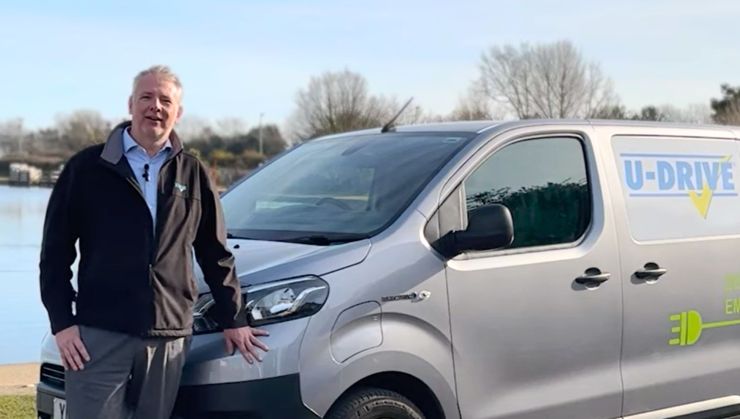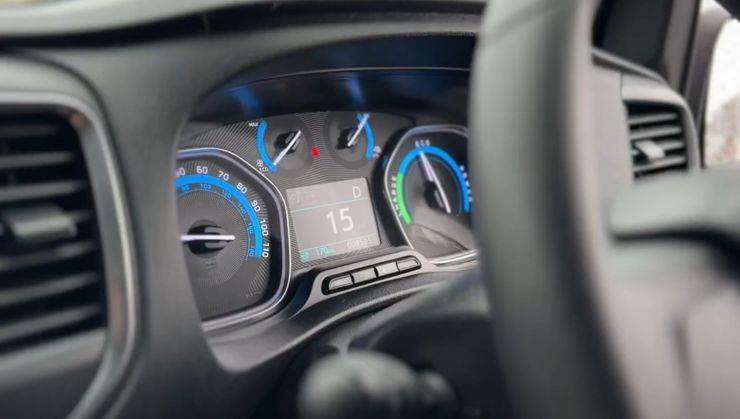Last Updated: 28th October 2024
What Affects EV Charging Speed?
When it comes to charging your EV, you'll find the speed varies based on several factors such as:
- The model and make of your vehicle
- The charger type (AC or DC charging)
- The current charge level of the battery
Rather than being characterised by engine size in litres, EVs are defined by their battery size, measured in kilowatt-hours (kWh). According to Carmagazine, EV batteries range typically from 30kWh to about 100kWh, representing the total energy storage capacity.
Gridserve reported that electric cars typically use around 34.6kWh to travel 100 miles. Consequently, a 30kWh battery would allow for a range of under 100 miles. Bigger batteries, such as a 77kWh model, require more time to charge than smaller batteries, like a 33kWh one, when charged with the same equipment.
Charging time can be significantly reduced if your car supports higher-powered chargers.
Electric Vehicle Charger Types
Charger power is measured in kilowatts (kW), directly impacting charging speed. Higher kW ratings result in faster charging. Shell categorises EV chargers into:
- Slow (up to 3-7 kW)
- Fast (7-25 kW)
- Rapid (50-150 kW)
- Ultra-Rapid (150kW - 350kW currently)
Home or workplace chargers usually provide 3 kW (slow) to 22 kW (fast), requiring several hours to fully charge a vehicle. Most modern cars support 50 kW (known as rapid charging), with mainstream models often accommodating 90-100 kW. Some electric vehicles now boast up to 350 kW (ultra-rapid) charging capabilities. Rapid and ultra-rapid chargers are typically located at service stations and charging hubs.
The difference between AC and DC connectors for charging EVs
One of the key distinctions to grasp when owning an electric vehicle is the difference between AC (Alternating Current) and DC (Direct Current) connectors.
AC charging is the most common type of charging for EVs. It's the type of current you find in standard household outlets and most public charging stations. AC chargers are typically less expensive to install compared to DC fast chargers. They are perfect for daily commuting, where the car is parked for several hours, such as overnight or during work hours.
DC charging is designed for rapid charging. It converts AC power from the grid into DC power directly at the charging station, delivering it straight to the battery. DC charging is significantly faster, capable of charging an EV up to 80% in as little as 20-30 minutes in some cases. DC fast chargers are found at dedicated charging stations, often along motorways, catering to long-distance travel.
The reason AC chargers are slower is that batteries store energy as DC. AC chargers supply AC, which must be converted to DC within the battery, extending the charging time. In contrast, DC charging delivers energy directly to the battery, making the process much quicker.
Common EV connectors are as follows:
| AC Connectors (Slow & Fast charging) | DC Connectors (Rapid & Ultra-Rapid charging) |
| UK 3-pin (BS 1363) | CHAdeMO (Japanese JEVS) |
| Industrial Commando (IEC 60309) | CCS (Combined Charging System or ‘Combo’) |
| Type 1 (SAE J1772) | Commando |
| Type 2 (Mennekes, IEC 62196) | Tesla’s proprietary supercharger connectors |
Electric Vehicle Charge Time
Charging times are typically specified for the 20% to 80% range due to the nature of the charging curve.
The peak figures advertised for Medium or High-Power chargers point to the maximum power output, not a constant rate. The actual charging power your vehicle receives varies depending State of Charge (SoC) on the battery. Each vehicle model features a unique charging curve, achieving higher power levels at different stages of charging.
Typically, once the battery reaches above 80% SoC, the car reduces the charging power to avoid exceeding cell voltage limits.
As a result, charging from 80% to 100% on a public Medium or High-Power charger takes significantly longer. Therefore, it's advisable to charge up to 80% initially and then continue your journey, stopping later if necessary for a quick top-up.
This approach optimises overall charging time and ensures availability of charging bays for other EV drivers.
Top tip: frequent rapid and ultra-rapid charging is not recommended to help preserve the battery health of your EV.
How To Work Out Electric Vehicle Charge Time
The charge time on an electric vehicle depends on the battery size, the maximum charging power the vehicle can accept, the power output of the charging station and other factors. However, we can use a simple formula to work out approximate charge time.
Charge time (hours) = battery size (kWh)/charger power output (kW)
We have put this formula into practice with an electric vehicle with a battery size of 68kWh and a maximum charging power of 135kW.
- 2.3kW (standard household outlet: 68kWh (battery size)/2.3kW (power outlet) = 30 hours.
- 7kW (typically a home EV charge point): 68kWh (battery size)/7kW (power outlet) = 10 hours.
- 22kW (fast charging station): 68kWh (battery size)/22kW (power outlet) = 3 hours.
The majority EVs only support a maximum AC charge of 11 kW (some only 7 kW or even 2.7 kW). Therefore, even if you connect to a 22 kW charger, you will only draw 11 kW (or 7 kW or 2.7 kW), respectively. To achieve a faster charging rate, you need to connect to a DC charger that supports a higher kW output if your EV battery supports it.
For rapid chargers, the formula is slightly different as it is calculated for the 20% to 80% range due to the charging curve mentioned above.
As we are working out the charging time for 60% of the battery for rapid charging, the battery size needs to be multiplied by 0.6.
60% of the battery = battery size (kWh)x0.6
We have put this formula into practice with the same electric vehicle with a battery size of 68kWh and a maximum charge power of 135kW.
- 50kW (rapid charge): 68kWh (battery size)x0.6 (for 60% of the battery size) = 40.8kWh. 40.8kWh (battery size)/50kWx60 (to work out the minutes) = 50 minutes.
Some public charging stations are capable of ultra rapid charging which is 150kW to 350kW, but this will continue to improve over time. As our example vehicle only accepts power up to 135kW, that's the maximum power you will be able to put into your vehicle. The formula will look like:
- 150kW (ultra rapid charging): 68kWh (battery size)x0.6 (for 60% of the battery size) = 40.8kWh. 40.8kWh (battery size)/135kWx60 (to work out the minutes) = 18 minutes.
If you've never charged an electric vehicle at a public charge point before, watch our guide that shows you step by step what to do.
The transition to electric vehicles can be a challenge for any business, but we are here to help. For a specialist consultation on how you can bring more EVs into your business, please call our team on 0800 980 9966.
The information was accurate on original publication, July 2024. External links have been provided as a reference source.
Looking To Transition Your Fleet To EV?
Are you looking to transition your fleet to EV but don't know where to start, or need some guidance throughout the process? Our EV Consultancy service can support you at every step, from a free consultation offering advice on all things EV, to analysing your current fleet usage, site surveys and even tailor-made training for you and your team to help your business transition to EV seamlessly.




